The ebird bird-listing site has a different challenge each month, and December’s was to make 50 documents — recordings or pictures — of birds. I decided to challenge myself a little more and try for 50 species. We usually see a bit more than 50 species per month, but it’s not always easy to get a picture or recording, and I need a little extra push to get outside in the December grey. Unfortunately not the best photos I’ve ever taken, given the light, but that’s part of the beauty of winter. Or something.
Geese
Numbers 1 to 4 were easy to spot, at least. Our local reservoir is a favourite hangout for Greylag Geese:

The Greater White-fronted Geese are one of my slightly dodgy IDs, but that’s my best guess (“more musical than the nasal Greylag/Tundra Geese”, says my bird guide):
We have plenty of Mute Swans, with their recognisable orange bills, though this juvenile hasn’t reached his full glory yet:

Yellow-billed Whooper Swans are another resident of the reservoir area:

Ducks
There are at least ten Mandarin Ducks on our little bit of the Spree:

The Mallards are not quite so fancy, but lovely in their own way:

The Goldeneyes spent the spring on the Spree, apparently fighting for territory, then mysteriously disappeared. We eventually tracked them down to the reservoir:

Number 8 is the Goosander:

Pigeons!
Numbers 9-11 are the pigeons. The Mallard of the pigeon world is of course the Feral Pigeon Rock Dove:

The Woodpigeons look almost elegant in the snow:
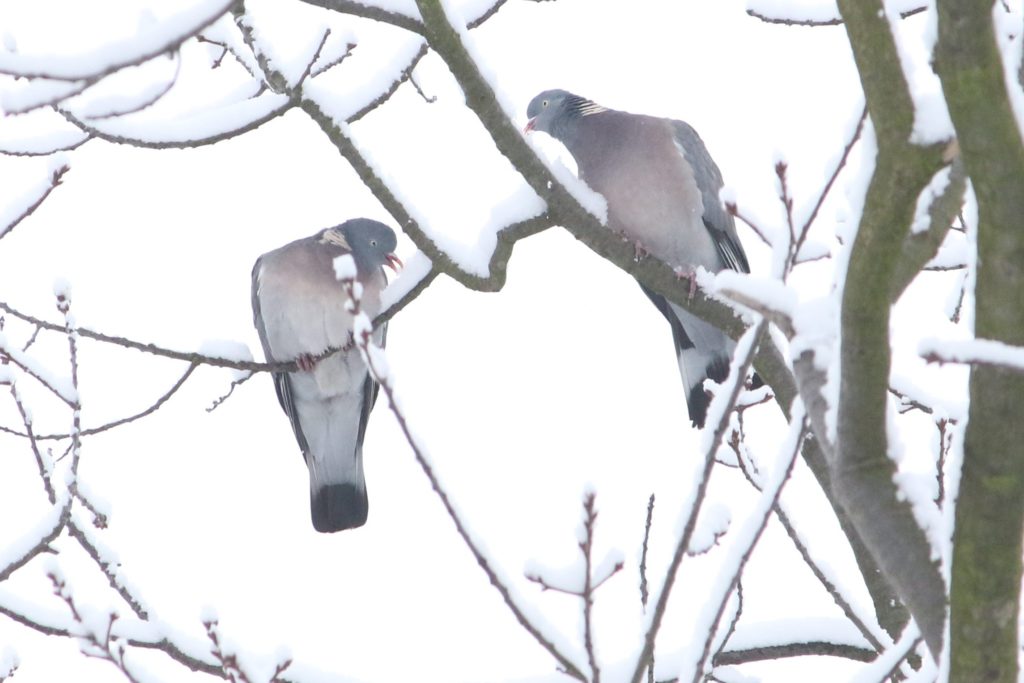
but not quite so much as the Collared Dove:

Gulls
Number 12 is the dainty Black-headed Gull — like the others, it’s enjoying the drained fish ponds of Peitz:

13 and 14 are also slightly suspect IDs — not only are they easily confused, but they tend to interbreed and produce hybrids. As far as we can tell (on expert advice), these are two of the Larus gull ring species. A juvenile Herring Gull:
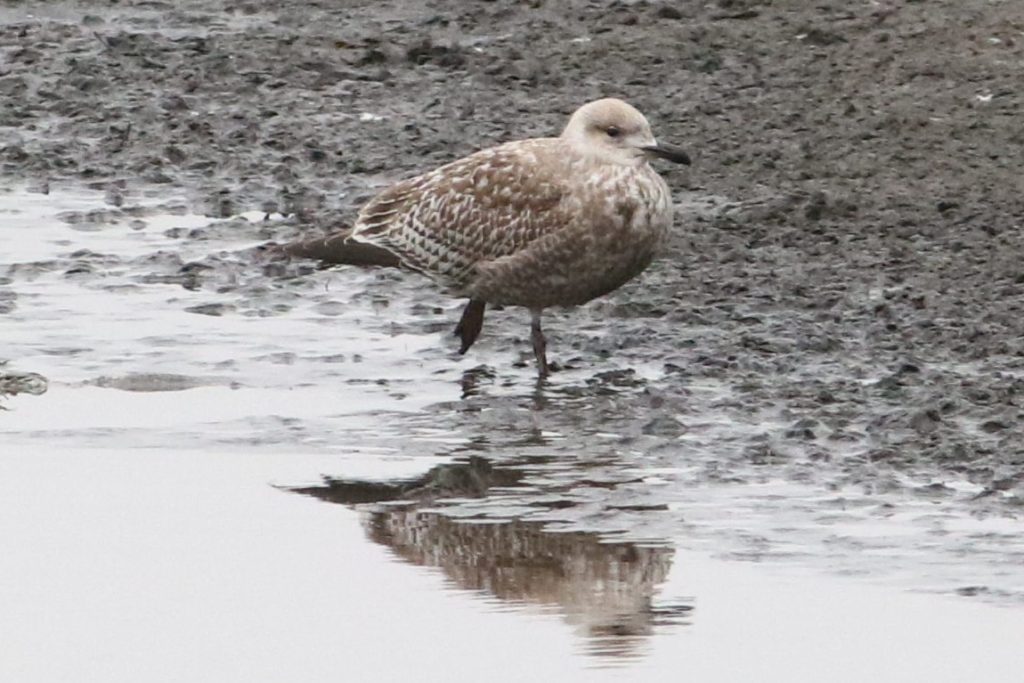
and adult Caspian Gull:

Long-necky Ones
Number 15 was a pleasant surprise — a flock of Common Cranes which hadn’t (yet?) left for sunnier latitudes:

The Great Cormorants are ubiquitous and voracious, removing fish from any water in the area:

The Grey Heron is not only gorgeous, but also relatively tolerant of humans sneaking up on him:

Unlike the Great White Egret, which spends much of its time escaping from annoying humans:

BoPs
Numbers 19-22 are the Birds of Prey. This Common Kestrel was having lunch by the path, so we had to reroute:

After several months of near-invisibility, the Sparrowhawks have been much more prominent recently, with this female hanging round near our flat:

Buzzards have been less visible this month, with no thermals to circle in, but they still their presence known:
Lastly, the mighty White-tailed Eagles have been prominent at Peitz, with up to 20 at a time enjoying their fish supper:

Woodpeckers
Birds 23-25 are the bigger woodpeckers. Great Spotted Woodpeckers are everywhere, and started drumming again after the first snows thawed. They’re quite excited:

The Green Woodpeckers have also been alarm-calling:
Black Woodpeckers have continued to be fantastic in every medium:
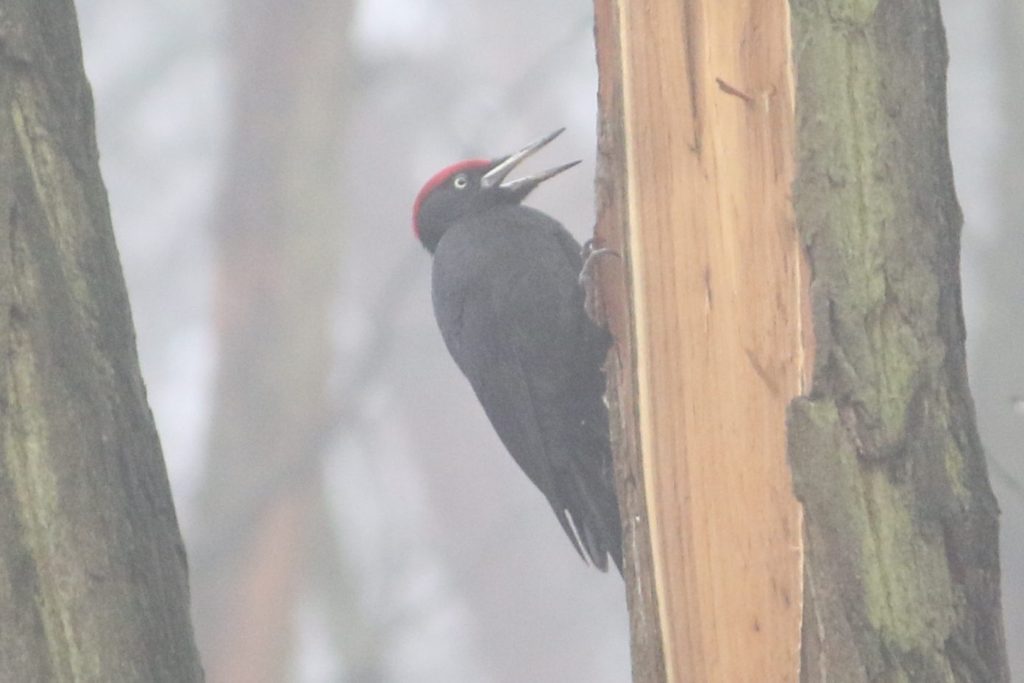
Tits
Numbers 26-32 are the tits. The Crested Tits are another group which have appeared in our area since late autumn, more often heard than seen:
Marsh Tits and Willow Tits are tricky to distinguish visually, but the Marsh’s white blob on the base of the beak is a handy clue:

Their calls are also distinctive, this being the Willow Tit:
The Blue Tit:

and Great Tit are so common they’re easy to overlook, so it’s good to take a moment to appreciate them:

Lastly here are the false tits, the absurd Long-tailed Tit:

and the permanently outraged Nuthatch:
Tinies
Species 33-36 are the tiny ones. All these became visible in autumn, as the leaves started to disappear. Goldcrests are the tiniest of all, but are easy to hear:
The other very tricky species pair is the treecreepers. This I’m fairly sure is a Eurasian Treecreeper, with its notch on the wing-bar:
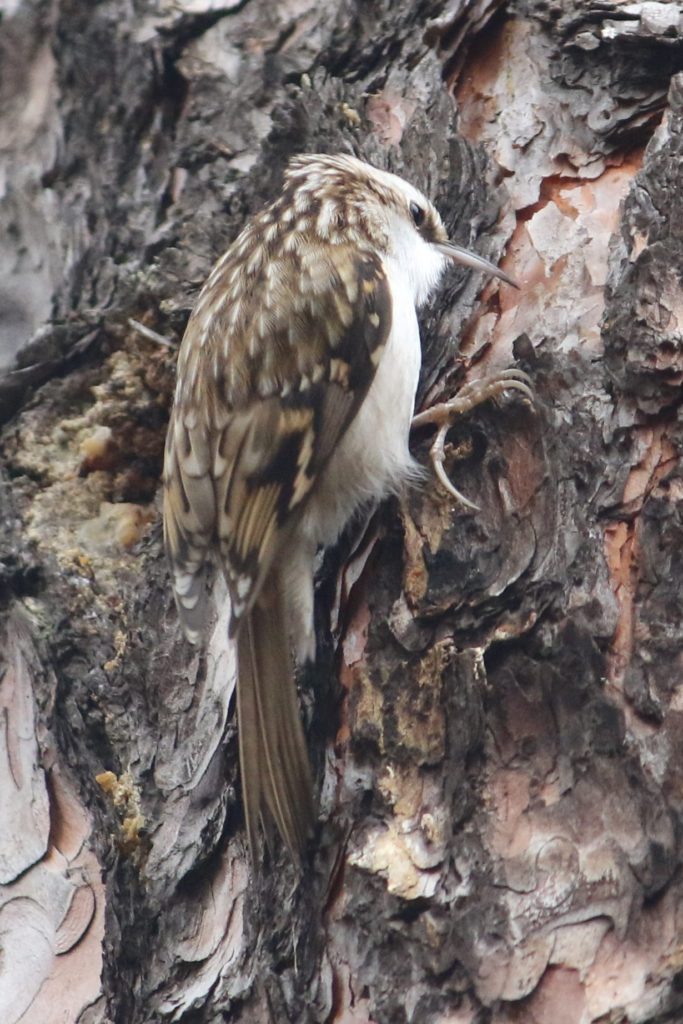
and I believe this is a notchless Short-toed Treecreeper:

This is definitely a Wren, though!

Muscicapoidea
Thrushlike-birds are numbers 37-40. Blackbirds are another underappreciated tribe:

The Fieldfares have just started to appear for the winter:

The Starlings, meanwhile, have almost all left, but this one remained, imitating a Buzzard and Golden Oriole:

And what better bird for December than the Robin?

Sparrows
For once, an easily-distinguishable species pair, the false finches: #41, the House Sparrow:

and #42, the beauty-spotted Tree Sparrow:
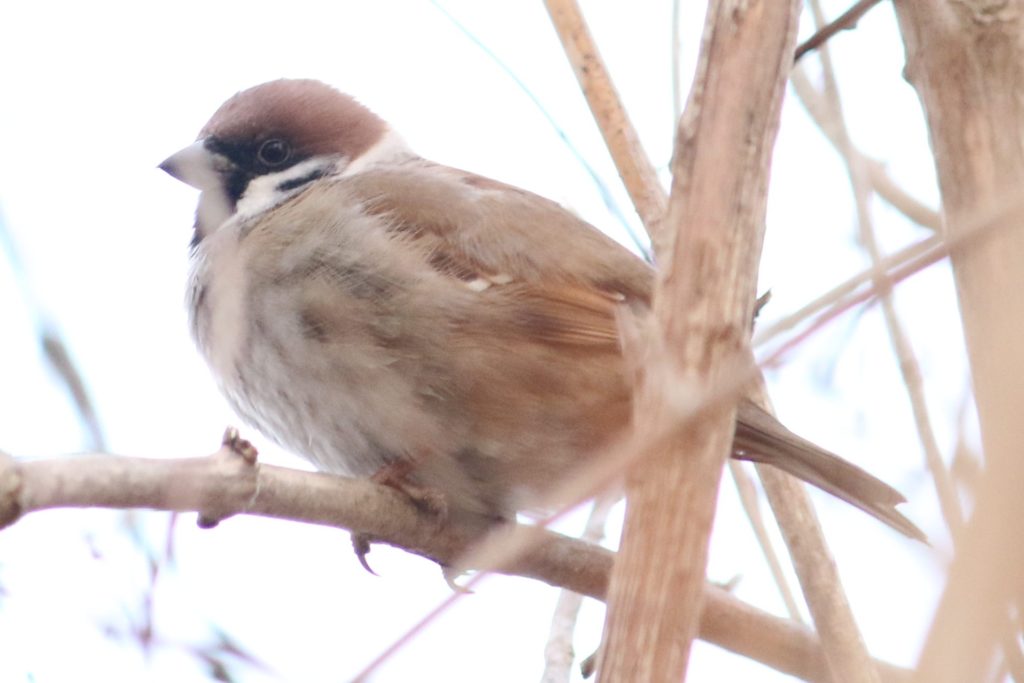
Finches
The true finches take numbers 43-47. The Siskins are probably the most common, but hardest to see, swooping from treetop to treetop in large flocks:

The Chaffinch:

and Greenfinch are more accessible, hanging out in the local gardens:

The Bullfinches are respendent but shy, though their call is very distinctive:
The mighty Hawfinch likes to sit on the very tops of trees, but one cooperatively perched outside my window:

Corvids
Saving the best group for last, birds 48-53 are the corvids. The Hooded Crows are perhaps the classic Cottbus bird, as we’re just east of the line that separates their territory from the Carrion Crows’:
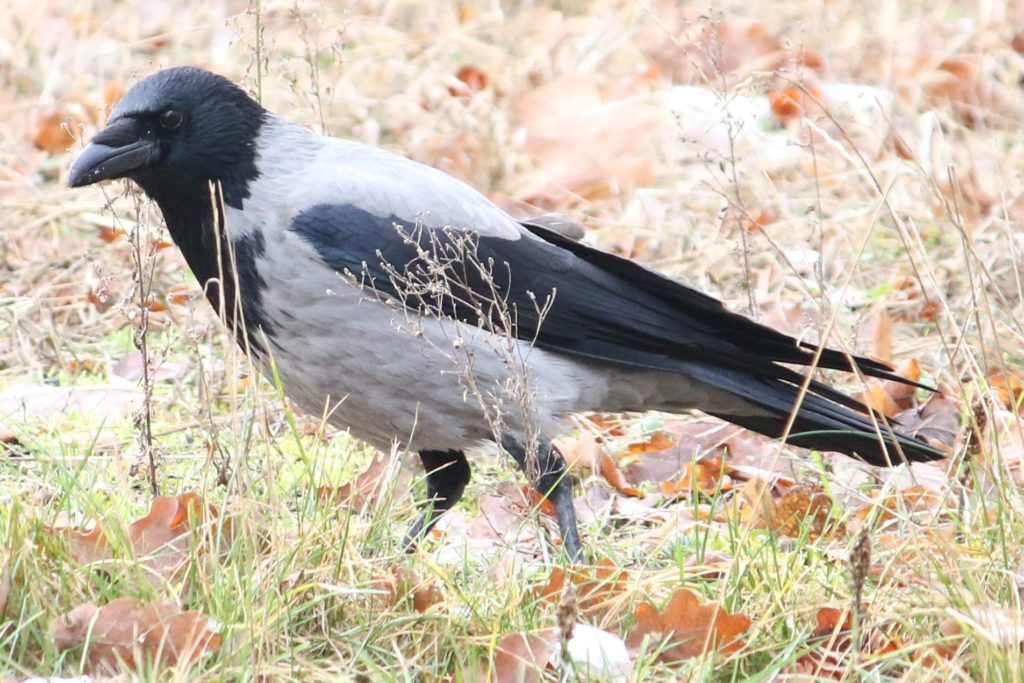
The Rooks took us by surprise, turning up in the city a few weeks ago after presumably spending the summer in the countryside. Confusingly, the juveniles are almost identical to Carrion Crows (apparently it’s all in the curve of the beak):

Species number 50 is the Raven! We’re lucky to have plenty around, and they’re very vocal:
So the last three places go to our commensal corvids. The Magpies are the most elegant:

A few of the local Jackdaws are ringed. I was able to find out that this one is last year’s brood, and is a native Cottbusian. No surprises, but it brings him/her a little closer:

And finally the Jay, unmissable and unmistakable:

Except when imitating a buzzard:
